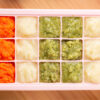According to various worldwide studies, walkers are responsible for the majority of baby accidents. However, parents keep on using them, mainly due to the wrong belief that the walkers can help the baby to walk earlier.
It is important for parents to know, that the walkers do not help the baby to walk earlier. On the contrary, they can further delay your baby’s walking. This happens because when the babies are in the walker, they use the tips of their toes to “walk”. So, when the babies are out of the walker, they tend to continue their effort to walk by using only the tips of their toes, which is not the normal patten. In addition, sitting in the walker, usually delays the ability of the baby to balance on his own.
Unfortunately, accidents continue to happen, even with babies on constant supervision. According to an American study, up to 70% of the cases include babies with someone looking after them at the time of the accident. In the United Kingdom, in a period of one year, over 2500 babies were transferred to the hospital after an injury caused while using a walker; 70% of them were less than 12 months old. According to an Australian study, one third of the babies who use a walker will get injured.
Why baby walkers are dangerous for children?
Baby walkers allow the baby to move with greater speed and enable to use their hands easier. For this reason, babies on a walker can easily fall of the stairs, hit on a table’s corner or on a glass door, or even crash on a warm oven. The baby walker does not offer balance to a baby who does not have the ability yet to stand or walk on their own. As a result, a baby can easily overturn and get hurt.

The majority of injuries is caused by:
Guidelines for the safe use of baby walkers
It would be more preferable not to use a baby walker at all. But, if you decide to use one, keep the following tips in mind:
It is of paramount importance to have the aforementioned guidelines in mind, in order to prevent injuries at home and to protect your children.











